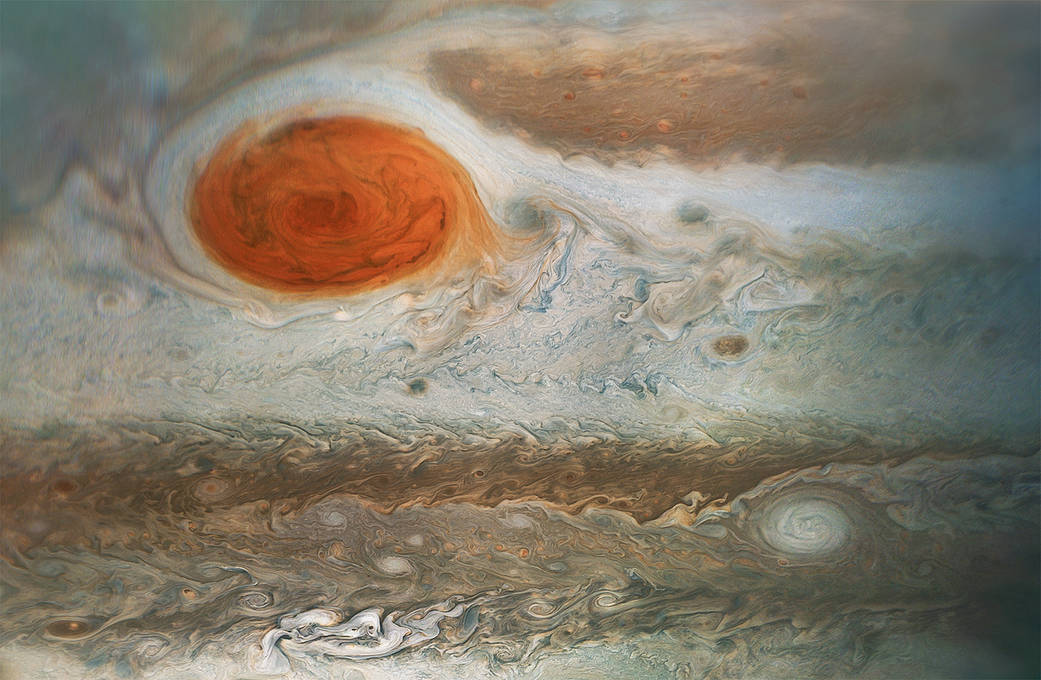
Jupiter’s Great Red Spot Up Close!

By Dr. Lisa Will, Resident Astronomer at the Fleet Science Center.
NASA’s Juno mission reached Jupiter on July 4, 2016, after a five-year space voyage. On board Juno is a built-in camera, JunoCam, built by San Diego-based Malin Space Sciences Systems. In August 2016, JunoCam started taking the highest-resolution images ever captured of Jupiter, including the first to feature the planet’s polar regions.
This week, a few days after the first anniversary of its arrival at Jupiter, Juno sent back images of a Jovian* feature that has amazed astronomers ever since its discovery, the Great Red Spot!
What is the Great Red Spot? It’s a 10,000 mile wide storm! It's larger than planet Earth.
The storm was first observed almost 200 years ago. The size, shape, and color of the storm have varied since it was first observed, but its existence has remained consistent and scientists don’t know how long the storm will last.
On July 11, 2017, Juno passed a mere 5,600 miles above the Great Red Spot, allowing astronomers to see finer details in the gaseous clouds than ever before. Scientists are working to figure out how deep the storm is and perhaps figure how the storm works once and for all.
NASA is making the raw image data available to the public. It’s easy and fun to play with in image processing software. Yours truly created the attached image in Adobe Photoshop Elements in just a few minutes. Play and have fun with the beauty of Jupiter and its Great Red Spot!
Here are some great links for more images and information:
https://www.missionjuno.swri.edu/junocam
https://www.missionjuno.swri.edu/news/juno-to-flyover-red-spot-july-10
Wishing you clear skies!
*Jovian: relating to the planet Jupiter or the class of giant planets to which Jupiter belongs.
